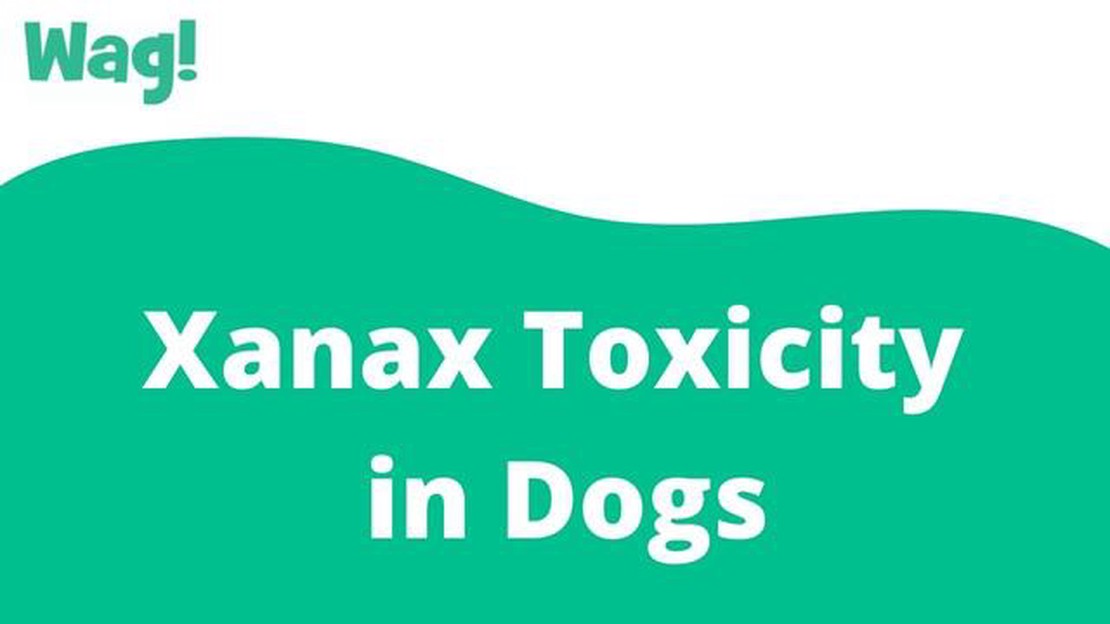Can A Coyote Mate With A Dog? Exploring the Possibilities and Genetic Compatibility
Can A Coyote Mate With A Dog In the animal kingdom, the boundaries between species can sometimes blur. One intriguing question that arises is whether …
Read Article
Is your dog showing signs of anxiety or stress? Xanax can help manage these symptoms, but it’s important to use this medication responsibly. Understanding the symptoms, proper treatment, and prevention methods for a dog overdose on Xanax is crucial for every responsible pet owner.
If your dog accidentally ingests too much Xanax, they may experience a range of symptoms. It is important to recognize these symptoms and seek immediate veterinary attention to ensure the health and safety of your pet.
If you observe any of these symptoms in your dog after a Xanax overdose, please contact your veterinarian immediately. It is crucial to not wait and seek prompt medical attention to prevent any further complications.
If your dog has experienced an overdose of Xanax, you may notice a variety of behavioral changes. It is important to be aware of these signs and seek veterinary care immediately.
If you notice any of these behavioral changes in your dog after a Xanax overdose, it is crucial to seek immediate veterinary attention. Your veterinarian will be able to assess your dog’s condition and provide appropriate treatment to help them recover.
If your dog has overdosed on Xanax, you may notice the following physical symptoms:
If your dog is experiencing any of these symptoms after ingesting Xanax, it is important to seek immediate veterinary care. Time is of the essence in treating a Xanax overdose, and prompt veterinary intervention can greatly improve your dog’s chances of recovery.
If your dog has overdosed on Xanax, they may experience gastrointestinal issues as a result. These can include:
If you notice any of these gastrointestinal issues in your dog after a Xanax overdose, it is important to seek veterinary care immediately. The veterinarian will be able to provide appropriate treatment and monitor your dog’s condition.
Read Also: Dog Dry Nose Treatment: How Olive Oil Can Help
If your dog is experiencing breathing difficulties after ingesting Xanax, it is important to take immediate action. Here are some steps you can take:
Remember, breathing difficulties can be a serious symptom of Xanax overdose and should not be taken lightly. Seek immediate veterinary attention to ensure the health and well-being of your dog.
When a dog experiences an overdose of Xanax, it can have severe neurological effects. These effects can vary depending on the dosage and the individual dog’s reaction to the medication. Some common neurological effects of Xanax overdose in dogs include:
It is important to note that these symptoms can be very distressing for both the dog and the owner. If you suspect that your dog has overdosed on Xanax and is experiencing any of these neurological effects, it is crucial to seek immediate veterinary attention.
Preventing Xanax overdose in dogs is essential. Be sure to keep all medications stored securely out of your dog’s reach, and never give your dog any medication without veterinary supervision. If you have any concerns about your dog’s behavior or health, consult your veterinarian.
If your dog has accidentally overdosed on Xanax, it is important to seek immediate veterinary care. The treatment for a dog overdose on Xanax may include:
Read Also: Find Walmart Dog Tag Machine Locations Near You Get Your Dog Tag Made in Walmart
It is important to prevent dog overdoses on Xanax by keeping medications securely stored and out of reach of pets. If you suspect that your dog has ingested Xanax or any other medication, contact your veterinarian immediately.
The symptoms of a dog overdose on Xanax may include sedation, confusion, loss of coordination, drooling, vomiting, diarrhea, and in severe cases, respiratory depression and coma.
If your dog overdoses on Xanax, you should immediately contact your veterinarian for guidance. They may advise inducing vomiting or giving activated charcoal to help absorb the medication.
No, you should not give your dog Xanax without consulting with a veterinarian. Xanax is a prescription medication and should only be administered under the guidance of a veterinary professional.
Yes, there are several ways to prevent Xanax overdose in dogs. First, always keep medications securely stored out of reach of pets. Second, never give your dog medication without proper veterinary guidance. Lastly, if you suspect your dog may have ingested Xanax, seek veterinary help immediately.
The treatment for a dog overdose on Xanax may vary depending on the severity of the overdose. In some cases, the veterinarian may induce vomiting or administer activated charcoal to absorb the medication. They may also provide supportive care, such as intravenous fluids, to help flush the drug from the dog’s system.
Yes, a dog can potentially die from a Xanax overdose, particularly if the overdose is severe and immediate veterinary intervention is not sought. It is essential to contact a veterinarian promptly if you suspect your dog has overdosed on Xanax.
Can A Coyote Mate With A Dog In the animal kingdom, the boundaries between species can sometimes blur. One intriguing question that arises is whether …
Read Article10 Month Old Puppy Biting When you first bring home a cute and cuddly 10 month old puppy, it’s easy to overlook their natural tendency to bite. …
Read ArticleCan Dogs Have Altoids Altoids are a popular brand of strong, mint-flavored mints that are known for their intense flavor and refreshing taste. Many …
Read ArticleUsed Frontline Still Have Fleas Are fleas still bothering your furry friend? Don’t worry, we have the solution! Introducing Used Frontline, the …
Read ArticleSticktight Fleas And Olive Oil Sticktight fleas can be a nightmare for both humans and animals. These tiny pests burrow into the skin of their host …
Read ArticleWhy Isn’t My Dog Peeing After Neutering If you have recently had your dog neutered, it is important to monitor their behavior and health closely. One …
Read Article